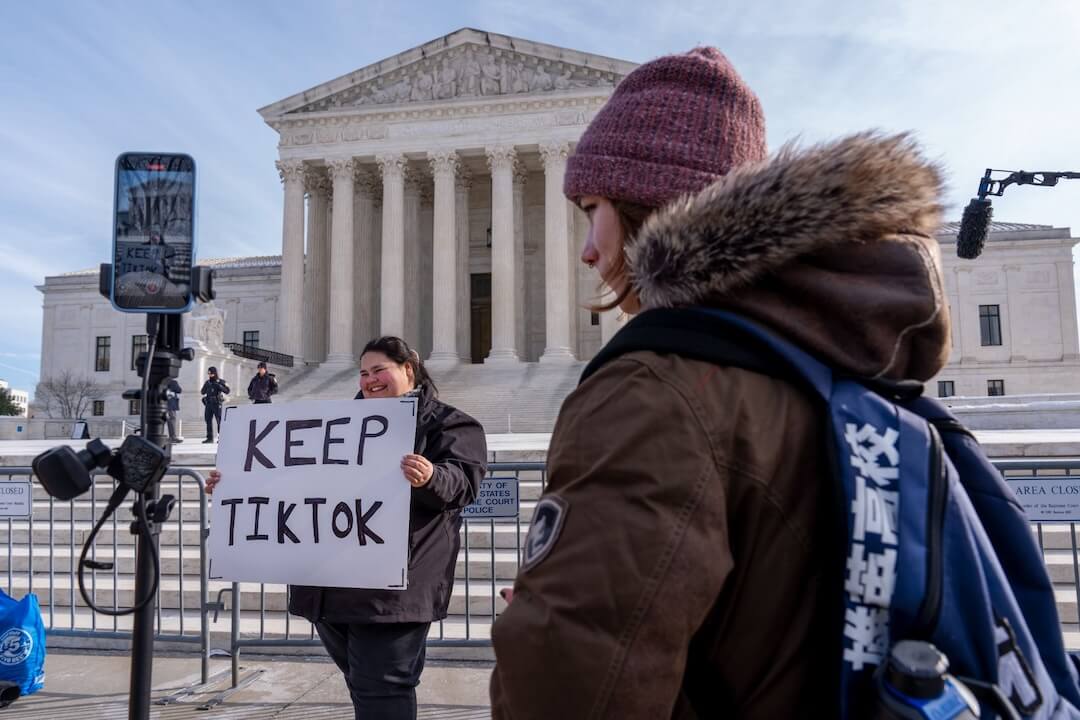(This article has been updated to include work recognized in recent contests including Investigative Reporters and Editors and American Society of News Editors.)
With so many respected newsrooms still adjusting to having the president call them the “enemy of the American people,” today’s announcement of the 2017 Pulitzer Prizes feels like a showdown. What will the winning journalism say about the press’ value to the public?
We’ll find out at 3 p.m. Eastern, when Pulitzer administrator Mike Pride reveals the 2017 winners and finalists chosen for 14 journalism categories, along with seven for arts and literature. The event is being livestreamed from the historic World Room of the journalism building at New York’s Columbia University.
Related training: Pulitzer Prize-Winning Writers: Secrets of Their Craft
Pulitzer selections reflect a closed-door, two-step process. Jurors from around the country met in late February to choose three entries per category from among 1,187 journalism entries, up slightly from the total in 2016. Juror choices went to the 18-member Pulitzer board this past Thursday and Friday, when they debated the nominations and established what typically is one winner and two finalists per category.
Poynter, as it does each year, prepared its preview largely by scanning work that other contests honored in the run-up to the Pulitzers — the nation’s oldest annual awards, which celebrated their centennial last year.
For the most part, these earlier journalism competitions employ a broader array of reporting, opinion-writing and photography classifications. Thus the relative handful of journalism Pulitzers is seen as marking the best of the best — naming winners only for Public Service; Investigative, Breaking News, Explanatory, and Local, National and International Reporting; Breaking News and Feature Photography; Feature Writing; Commentary, Criticism, Editorial Writing and Cartooning. (This preview concentrates on news-based prize prospects, which are somewhat less subjective.)
Special attention in today’s Pulitzer announcement likely will focus on the work of journalists covering 2016’s biggest story: the presidential campaign and upset victory by Donald Trump. And a few potential winners or finalists from that campaign trail reporting have already won big.
Long Island University’s George Polk Awards this February named The Washington Post’s David Fahrenthold the winner in the Political Reporting category. Fahrenthold’s investigations, which also won him the Robin Toner Prize from Syracuse University, detailed deception in charitable giving patterns involving the Trump Foundation and helped bring to light video of the candidate using crude language in talking about women.
Fahrenthold’s acceptance speech said much about his drive to understand candidate Trump’s approach to charity — and the encouragement the reporter got in his campaign assignment from Post Executive Editor Marty Baron.
The Polks also gave ProPublica’s Alec MacGillis the National Reporting prize based on his work during the campaign. He identified trends among voters in Rust Belt states that “the political establishment ignored, dismissed or overlooked,” according to the Polks. In addition, the Scripps Howard Foundation’s awards, which were announced in early March, honored MacGillis’s work with an award titled the “Topic of the Year.”
Still, relatively little campaign-related coverage received awards from other contests before Pulitzer day. Indeed, most major investigative winners involved regional, rather than national reporting, although two Scripps investigative awards went to regional organizations that took on national stories. An Atlanta Journal-Constitution team, for a project called “Doctors & Sex Abuse,” studied the medical profession’s cover-ups of patient abuse across the U.S. And an 18-month study called “Toxic Armories” won a Scripps Environmental Reporting prize for Rob Davis of The Oregonian. His project focused on health hazards in National Guard facilities across the U.S. after decades of operations.
Among contests reporting winners last week, the Worth Bingham Prize from Harvard University’s Nieman Foundation went to the Chicago Tribune’s “Suffering in Secret” series, by Michael Berens and Patricia Callahan. The series, revealing mistreatment of individuals in group homes funded by Illinois taxpayers, also won an award last week in the Investigative Reporters and Editors’ large-publication category.
The Selden Ring Award for investigative journalism, from the University of Southern California Annenberg School, honored the Houston Chronicle’s Brian Rosenthal for “Denied,” work about Texas state educators who kept special education services from disabled students. Rosenthal also won an IRE award and a Polk for Education Reporting. Another IRE award went to a Houston Chronicle team for innovation in a project titled “Chemical Breakdown,” which explored a deadly chemical explosion using a new method for analyzing potential dangers from facilities in their region.
A team from the Sarasota Herald-Tribune was a Ring finalist for “Bias on the Bench,” which detailed unequal treatment of black and white defendants in Florida. And another finalist, West Virginia’s Charleston Gazette-Mail, was cited for its stories explaining the role of the pharmaceutical industry in the opioid abuse crisis in the state. (The Gazette-Mail’s work also won a Scripps First Amendment award.)
But “Bias on the Bench” was among the top American Society of News Editors honorees announced this past week. Among ASNE’s winners the Herald-Tribune team of Josh Salman, Emily Le Coz and Elizabeth Johnson of the Herald-Tribune will receive its Batten Medal for public service journalism.
IRE’s Tom Renner Award went to the Indianapolis Star for “Out of Balance,” which focused on “hundreds of gymnasts who had been assaulted in the past two decades,” according to IRE. The work, by Marisa Kwiatkowski, Mark Alesia, Tim Evans and Steve Berta, led to “the ouster of the USA Gymnastics president” and to charges against a team medical staffer, IRE said. A finalist for that award was the Milwaukee Journal Sentinel for “Descent into Disorder,” a project focusing on Wisconsin’s juvenile justice system.
Along with the Worth Bingham and Selden Ring winners and finalists, honorees from the Goldsmith Prize competition, held by the Shorenstein Center of Harvard’s Kennedy School, often turn up again on Pulitzer day. This year, Mother Jones reporter Shane Bauer won the Goldsmith for his report “My Four Months as a Private Prison Guard,” based on his experiences in a Corrections Corp. of America facility at Winnfield, La.
The Goldsmith finalists were a Wall Street Journal team that produced “The Downfall of Theranos,” work revealing blood-testing abuses at a major medical startup; a Chicago Tribune team that produced “Dangerous Doses,” about pharmacies ignoring patient-drug interactions; the Los Angeles Times’ David Cloud, for breaking a California National Guard enlistment-bonus scandal; and the Sarasota “Bias on the Bench” team and Atlanta “Doctors & Sex Abuse” team.
The prize money awarded for Selden Ring, Goldsmith and Worth Bingham winners is among the largest among journalism awards: $35,000, $25,000 and $20,000, respectively. This year the Pulitzers have increased the cash that winners get by 50 percent, to $15,000 — all except the coveted Public Service Pulitzer, which still comes with a gold medal and no cash.
Predicting the Public Service medal winner can be particularly difficult, because the Pulitzer board seems to seek variety in that category from year to year, and often focuses on the measurable impact of the work it honors. In describing the results of the “Seafood from Slaves” exposé that won the 2016 medal, the Associated Press noted that 2,000 captive workers were freed because of the AP’s revelation of human rights abuses in Pacific fishing operations.
Among the year’s most celebrated international reporting has been the “Panama Papers” series by the International Consortium of Investigative Journalists and other news organizations. The work was performed by more than 400 reporters from media organizations in scores of countries, with their reports analyzing leaked documents that presented material from the files of a global law firm in the Central American country. The leaked records revealed how individuals and companies around the world hid assets in massive offshore accounts. The Panama project won top IRE and ASNE awards, and both a Polk for Financial Reporting and a Scripps award for Business/Economics Reporting.
ASNE also honored the Panama Papers reporting team for “impact in public service journalism,” making that project among the most-recognized among U.S. awards programs for the year.
One thing clear from the awards announced so far by other organizations is that relatively few prizes have gone to the “Big Four” newspaper powerhouses: the New York Times, Washington Post, Wall Street Journal and Los Angeles Times.
The New York’s Times, in particular, has been less a factor than usual in prizewinning. Reporters Nicholas Casey and Meridith Kohut did win a Foreign Reporting Polk award for their study of Venezuela’s economic collapse. And IRE made New York Times reporter Rebecca Ruiz a finalist for her detailing of Russia’s state-run sports doping program. Other finalists were the L.A. Times’ David Cloud for breaking a California National Guard bonus-enlistment scandal, and the New York Daily News and ProPublica for a series on how the New York City Police Department used a nuisance-abatement law to threaten businesses and homes with closure.
Stellar work by The New York Times, L.A. Times, Washington Post and Wall Street Journal still likely got a close look for Pulitzers in a number of reporting categories, though, and in feature writing and opinion writing divisions that this Pulitzer Preview doesn’t focus on.
Breaking News journalism honored this year has included the work of California’s East Bay Times. It received Scripps and ASNE awards for coverage of Oakland’s Ghost Ship Fire, in which it quickly pieced together evidence of code violations and possible causes of the deadly fire that killed 36 people. ASNE finalists were the Dallas Morning News for coverage of the July 7 ambush of police in the city and The Advocate of Baton Rouge, La., for its reporting on a July 17 police ambush there.
ASNE gave its feature writing award to the Boston Globe’s Billy Baker for “The Power of Will,” a narrative telling of Will Lacey’s battle to survive after the diagnosis of a rare childhood cancer. ASNE’s “justice in journalism” award went to the Washington Post’s Eli Saslow for his “White Flight of Derek Black,” about a man who turns away from the white nationalist cause that he might have led.
Stephen Henderson of the Detroit Free Press won for commentary or column writing for expressing “grace, clarity and humanity” on issues ranging from Detroit to the national scene. The Huffington Post’s Malia Politzer and Emily Kassie won ASNE awards for online storytelling that described the world’s refugee crisis.
Among other ASNE winners was Utah’s Salt Lake Tribune staff, for “local accountability reporting” that studied sexual-abuse complaints at Brigham Young University and Utah State University. Also, Brian Colligan, an editorial writer for Norfolk’s Virginian-Pilot, won for writing “The Jailhouse Death of Jamycheal Mitchell,” about a mentally ill man jailed for stealing $5 of snacks, and 101 days later found dead in his cell.
As for photojournalism, New York Times photographer Daniel Berehulak won a Polk for “They Are Slaughtering Us Like Animals,” a photo essay on Philippines President Rodrigo Duterte’s murderous drug crackdown. And the ASNE’s photojournalism winner was the Dallas Morning News photo staff, for its work covering the Dallas ambush of police.
Magazines, which were allowed to enter in all categories for the first time this year, drew 146 submissions, just over 12 percent of all entries, Pulitzer Prize administrator Mike Pride said. Clearly, magazines could be a larger factor for 2017 Pulitzers, a competition that once barred them. In 2016, journalists writing in The New Yorker won both the Feature Writing and Criticism prizes. (This year’s National Magazine Award winners were announced in February.)
Mike Pride, who is announcing winners and finalists for the last time, is retiring this year after three years as administrator. The Pulitzers have launched a search for a new administrator.
The Society of Professional Journalists expects to report its Sigma Delta Chi awards in the days after the Pulitzers are announced.
Correction: The Atlanta Journal Constitution’s investigation examines patient abuse nationwide, not merely in Georgia.







